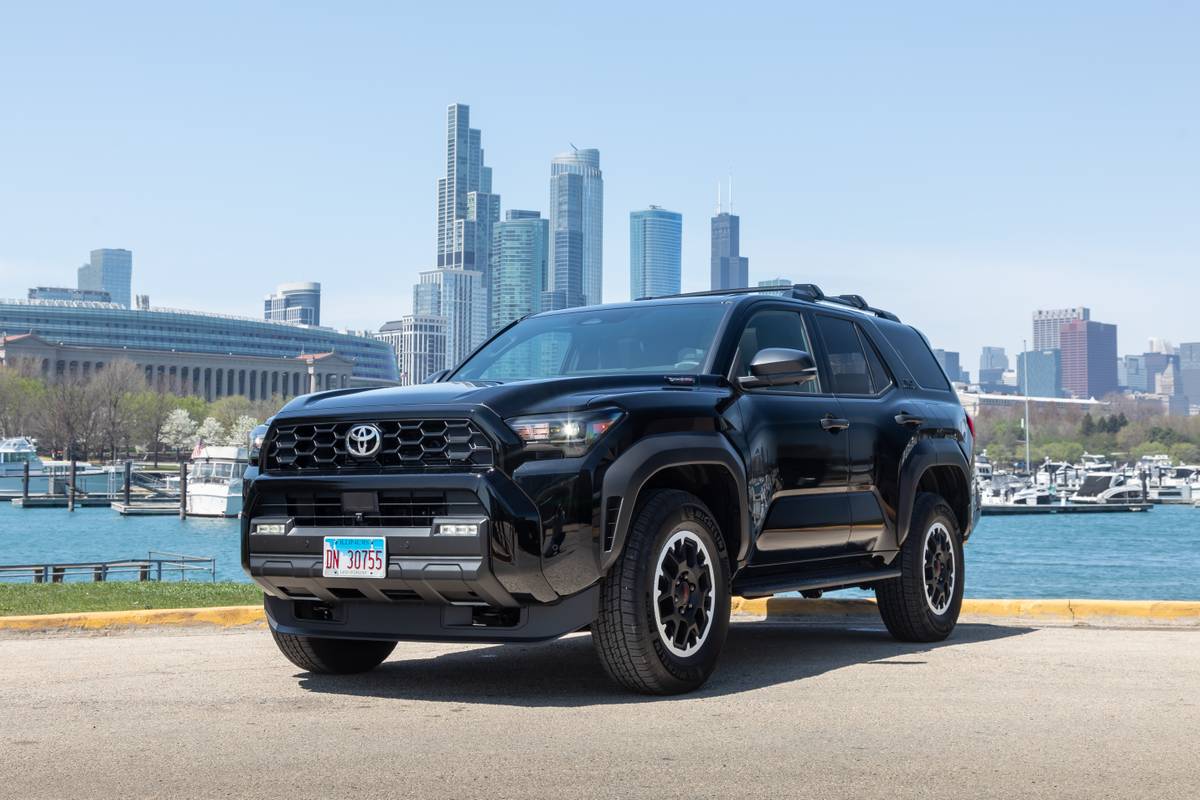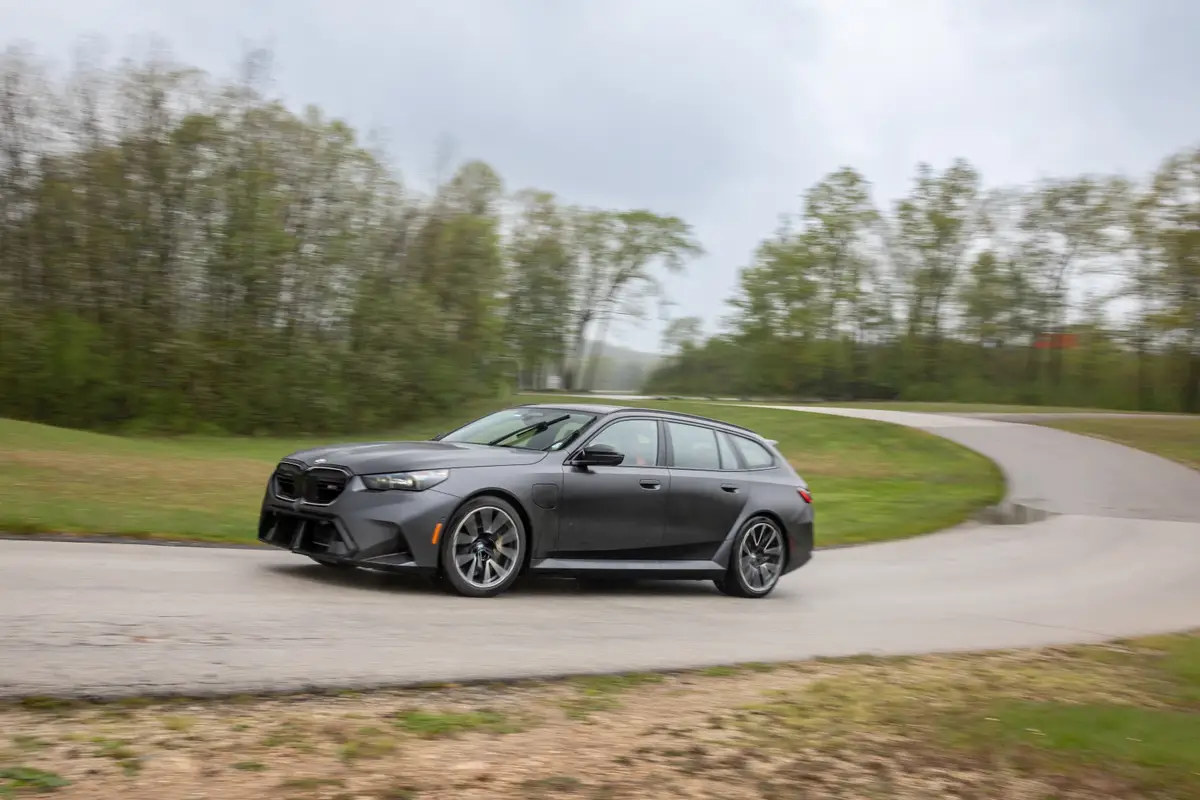SUV Comparison: 2016 Kia Sorento Vs. 2015 Hyundai Santa Fe


CARS.COM — Just a year ago, the Kia Sorento might have been out of place in a comparison with the three-row Hyundai Santa Fe. The outgoing Sorento was on the smaller side, but for 2016, the Sorento is more of a Santa Fe rival; its optional third row and longer wheelbase opens up more passenger and cargo room.
Related: 2016 Kia Sorento Expert Review
Both cars are corporate cousins sharing some components and architecture. The Sorento has upped its game in quality and refinement, and that’s reflected in the sky-high as-tested price of our test car. Both the Santa Fe and Sorento we tested were fully loaded. The Santa Fe checked in at $41,695, including a destination fee, for a Limited model with all-wheel drive, while the Sorento SXL with all-wheel drive tallied a massive $46,695, including a destination fee.
Cars.com editors Joe Bruzek and David Thomas spent a day driving the Sorento and Santa Fe head-to-head to determine if one could significantly edge out the other. Here’s how it shook out:
Interior Quality
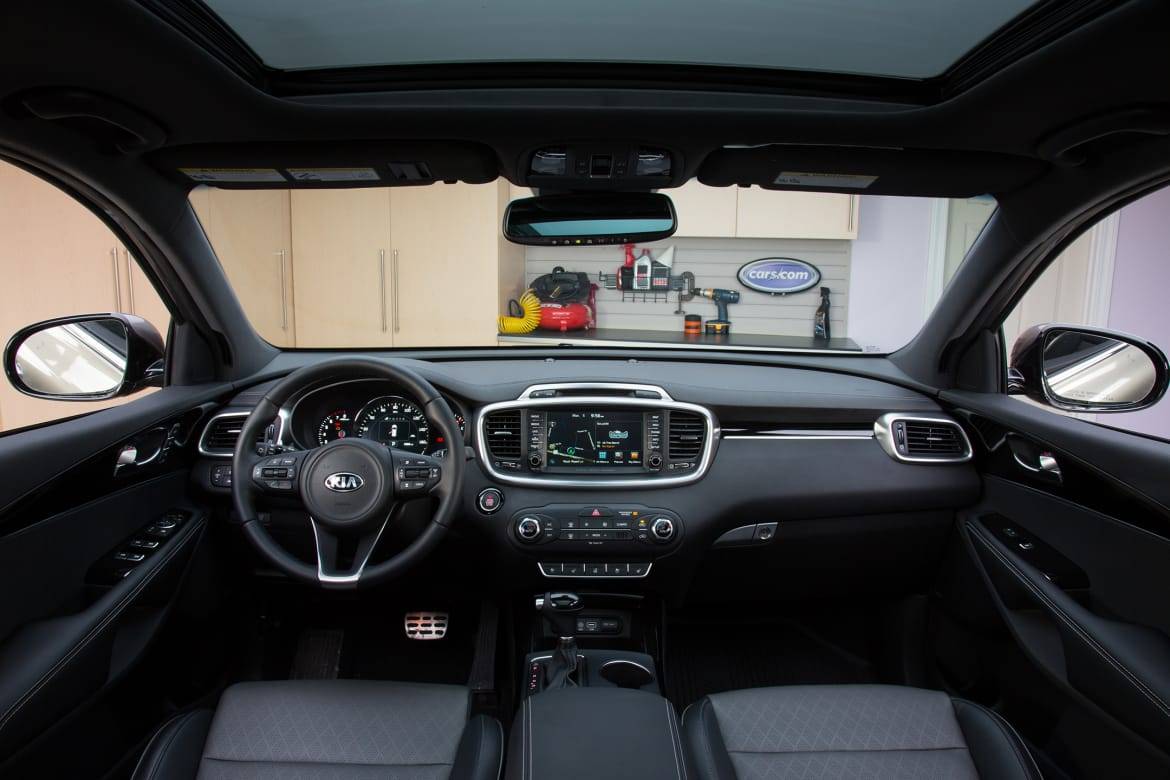
Winner: Sorento
Kia took a big step forward with the 2016 Sorento’s interior quality. Our top-line test car showcased the best the Sorento offers with supple Nappa leather seats that are truly a step above the Santa Fe’s leather seats. Hyundai’s design leans toward elegance with wood trim and light coloring, while the Sorento is geared toward sportier, darker colors. The Sorento’s quality will cost you, though; the Nappa seats are standard on only the top SXL trim level.
Room

Winner: Santa Fe
The Sorento is still a little short on space in some areas compared with the Santa Fe. Both offer great levels of comfort in the first row, with a tad more front legroom in the Sorento. While in the second rows, the Santa Fe has more legroom and a wide-open walkway between the captain’s chairs. The third row is where the difference is made. The Santa Fe gets the nod here with a more comfortable seating position and easier access from one-touch sliding seats on both the driver and front passenger sides. The Sorento only has this feature on one side.
Cargo/Storage
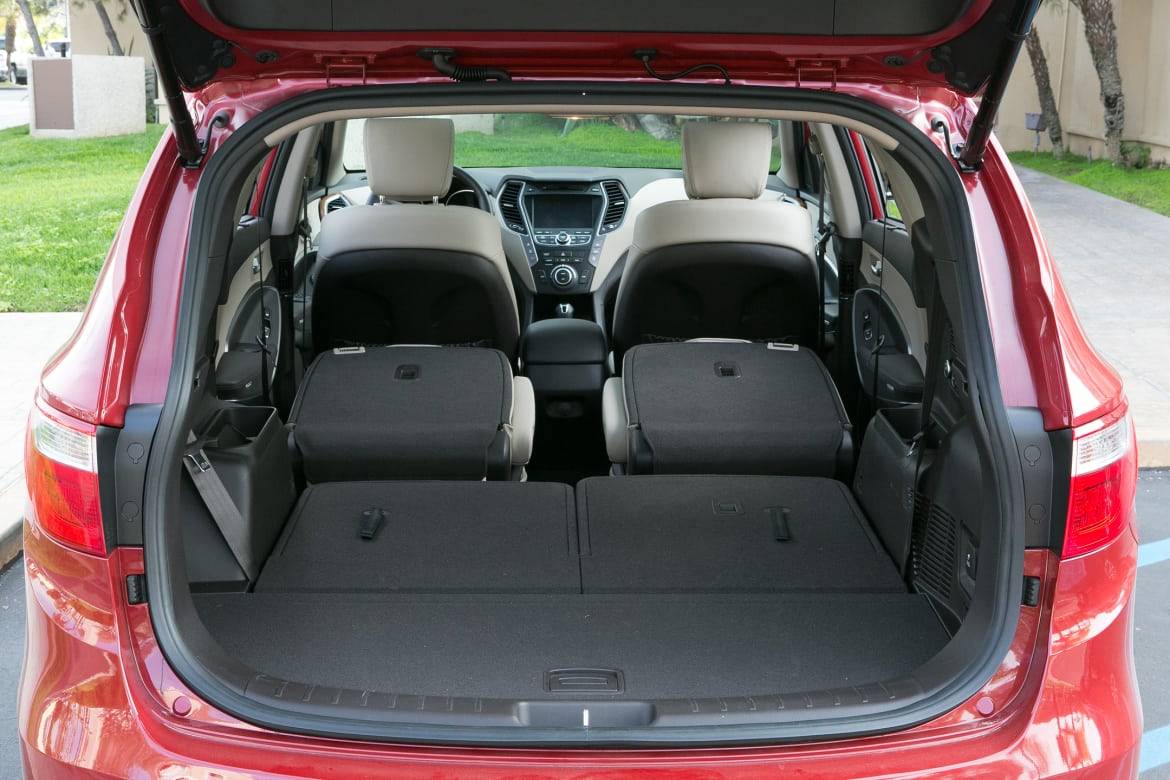
Winner: Tie
The Santa Fe has more overall storage space behind the third row and with those seats folded, but it’s not as much as you’d think given the Sorento’s upsizing for 2016. The Santa Fe boasts 80 maximum cubic feet versus 73 for the Sorento. Up front, forward of the Sorento’s gear selector is a covered storage cubby for cellphones and wallets; it’s a nice touch and helped to even out our scoring.
Technology
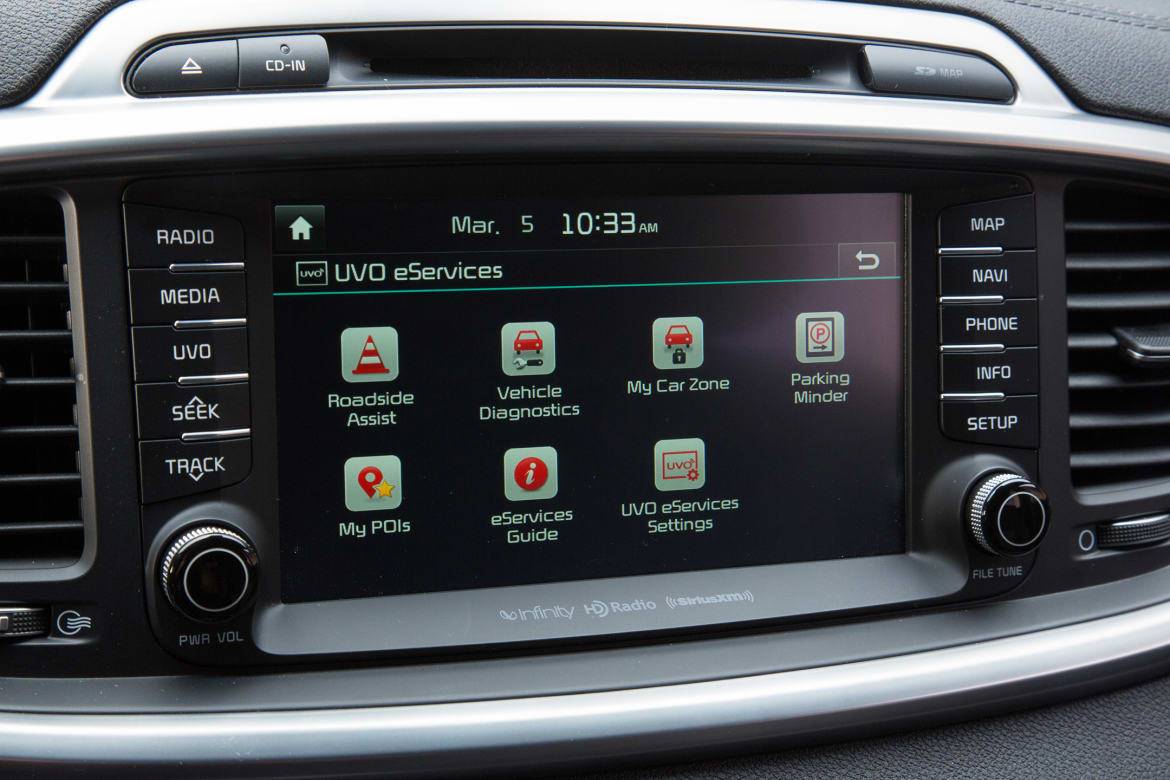
Winner: Sorento
Both SUVs use an 8-inch touch-screen, but the Sorento pulls ahead with intuitive physical controls featuring separate dials for both tuning and volume as well as an easier-to-use layout that’s much more familiar and traditional than the Santa Fe’s random collage of buttons. Our Sorento tester had more USB inputs including one in the backseat, as well as forward collision warning, adaptive cruise control and a 360-degree parking monitor — none of which are available on the 2015 Santa Fe.
Handling
Winner: Sorento
The Sorento is a tighter package all around when it comes to ride and handling. The Santa Fe feels heavy and cumbersome while cornering whereas the Sorento is more precise and confident in nearly all driving situations. Kia stiffened the Sorento’s chassis for 2016, though its Michelin tires may have a lot to do with its on-road performance. The Santa Fe’s Kuhmo tires screamed in even mild corners; take note, perpetually late soccer parents.
Acceleration
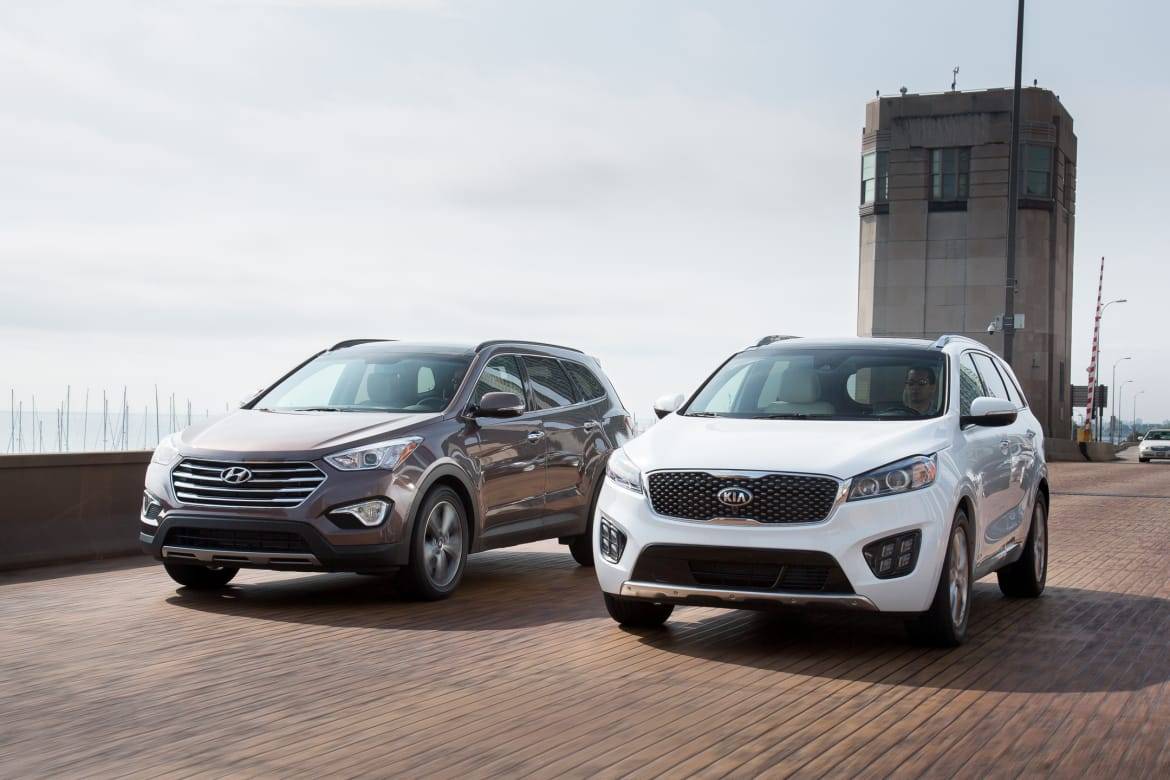
Winner: Sorento
Being corporate cousins, the Sorento and Santa Fe share the same 3.3-liter V-6 making a stout 290 horsepower and 252 pounds-feet of torque, which each pairs to a six-speed automatic transmission. You’d expect them to accelerate similarly since they weigh within 40 pounds of each other, but the Sorento gets a slight edge with crisper acceleration in the available Sport mode, which the Santa Fe doesn’t have. The Sorento also has a slightly more aggressive axle ratio, giving extra pep off the line.
Ride
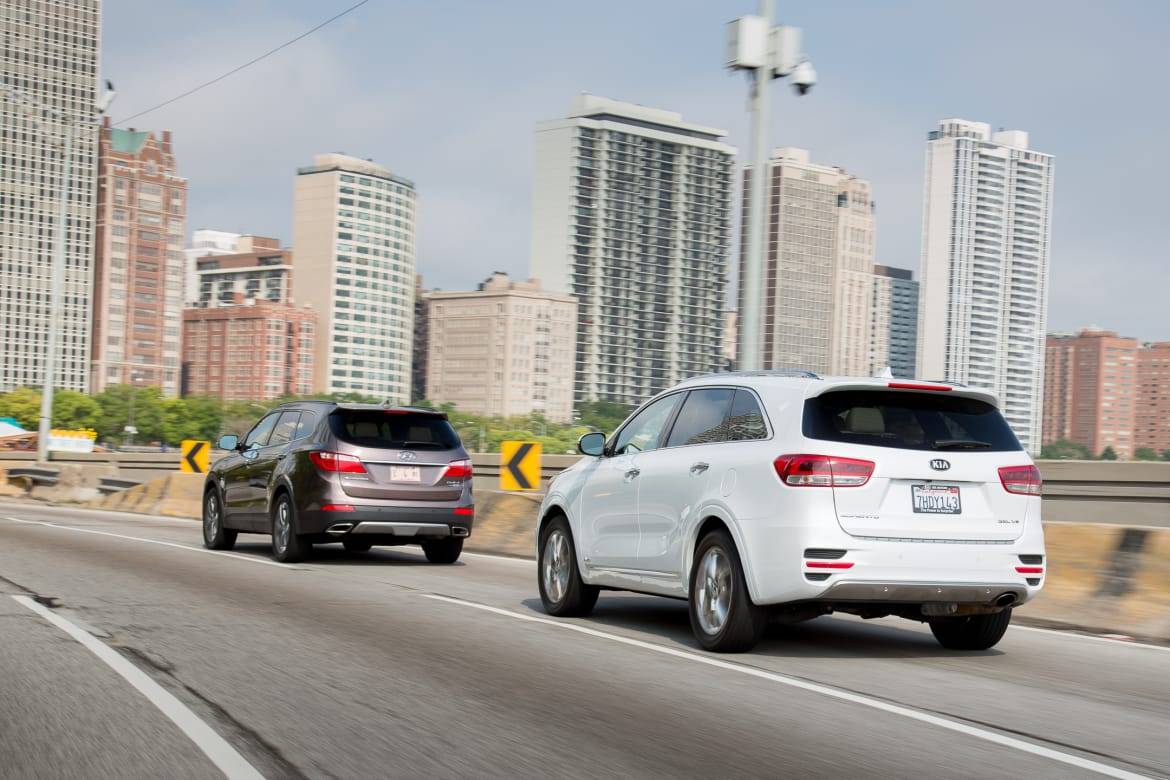
Winner: Sorento
The Sorento’s tight chassis tuning shows in ride quality; it’s controlled and sophisticated for this class. Its suspension and tires soak up road imperfections well and keep the road separate from the cabin. The Santa Fe still rides well and is perhaps a little easier on longer highway drives.
Noise
Winner: Sorento
Again, the Sorento’s on-road performance is a step above the Santa Fe. The Santa Fe’s road noise was prominent, and there seemed to be higher amounts of road noise from the tires. Our Santa Fe test car had around 9,000 miles on the odometer, but the Sorento had 11,000 and still felt tighter and quieter on the road.
Value
Winner: Santa Fe
The $41,695 commanded by the Santa Fe is a much easier pill to swallow than the Sorento’s $46,695, even though the Sorento is clearly the nicer car on the inside and to drive. Sure, you won’t get the higher-tech features like adaptive cruise control and side mirrors that extend when you walk up to the car, but the Santa Fe has a much more reasonable price tag for features still desirable in the class.
Results
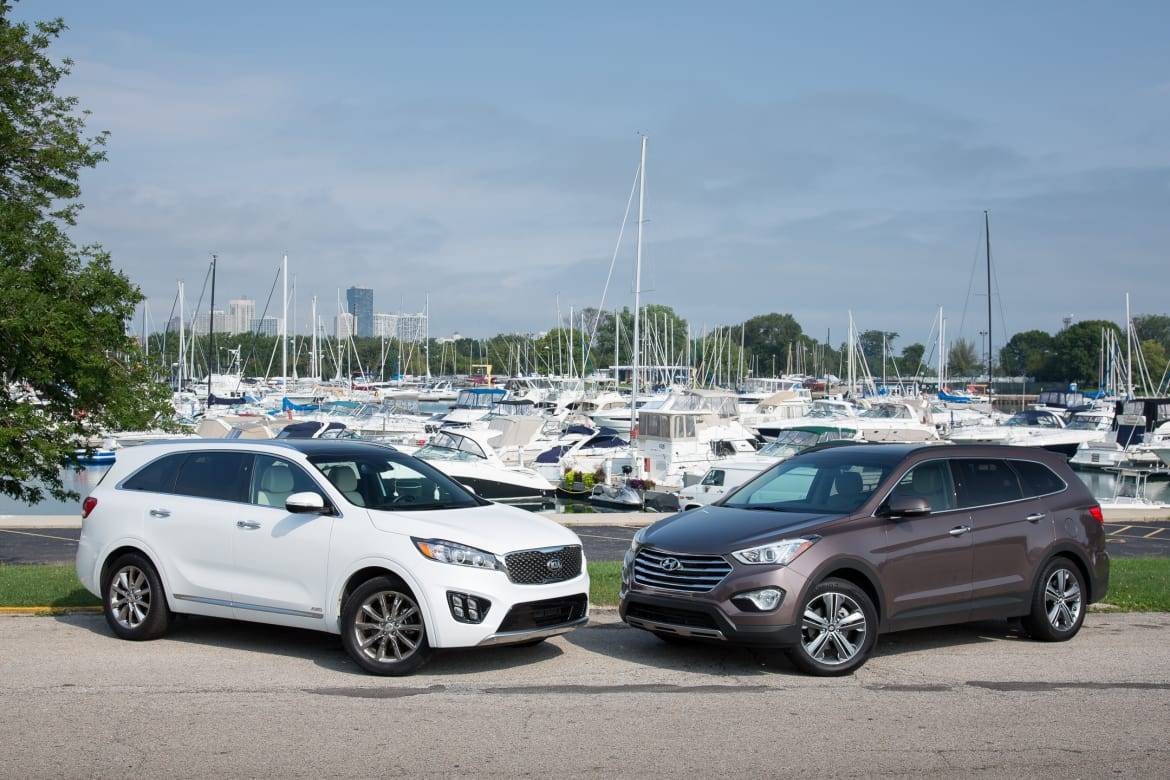
Winner: Sorento
Out of a possible 180 points, the Sorento scored 138 points and the Santa Fe earned 125 points; the two editor judges could award up to 10 points each in the nine categories.
When you scale back some of the Sorento’s features, you’re left with a car that’s similarly priced as the Santa Fe with an edge on interior quality, ride quality and overall refinement. It does all of that with slightly less space than the Santa Fe, most notably in cargo area, but with its new dimensions, there’s not that big of a difference between the two and the Sorento is clearly a step above in many areas.

Managing Editor Joe Bruzek’s 22 years of automotive experience doesn’t count the lifelong obsession that started as a kid admiring his dad’s 1964 Chevrolet Corvette — and continues to this day. Joe’s been an automotive journalist with Cars.com for 16 years, writing shopper-focused car reviews, news and research content. As Managing Editor, one of his favorite areas of focus is helping shoppers understand electric cars and how to determine whether going electric is right for them. In his free time, Joe maintains a love-hate relationship with his 1998 Pontiac Firebird Trans Am that he wishes would fix itself. LinkedIn: https://www.linkedin.com/in/joe-bruzek-2699b41b/
Featured stories
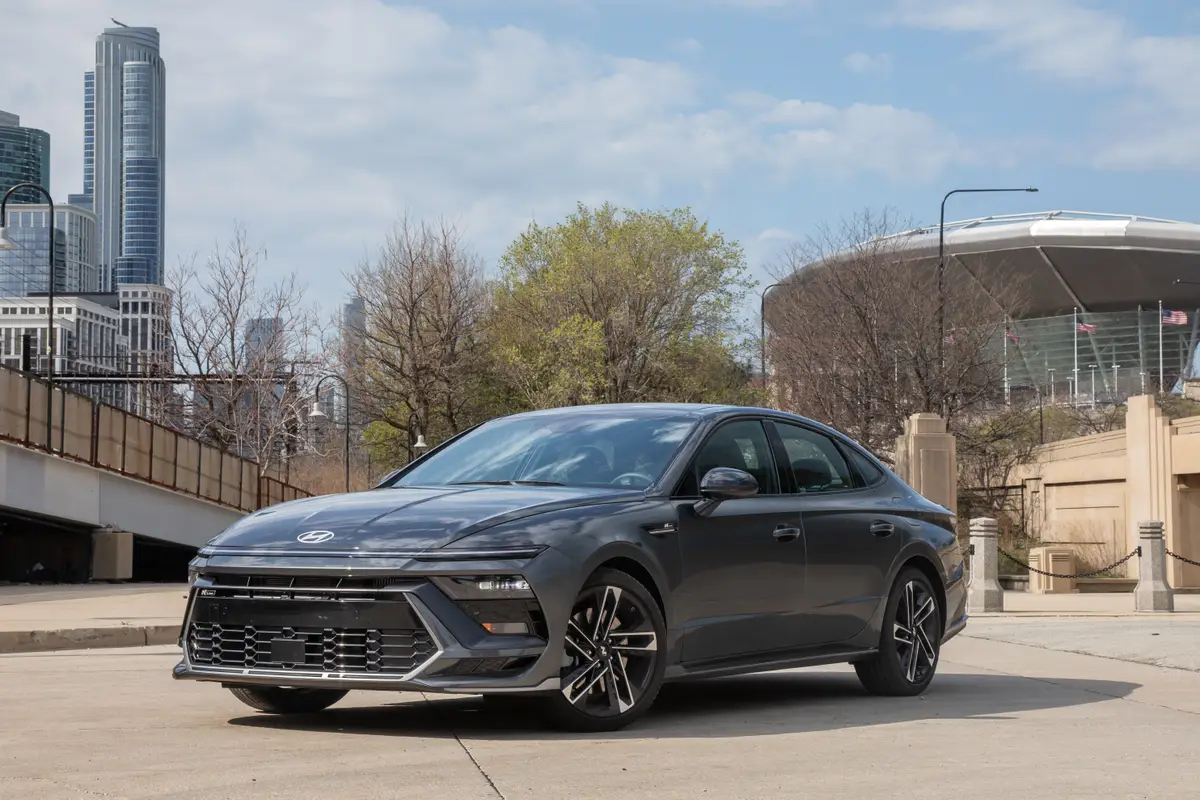
2025 Hyundai Sonata N Line Review: Banish Boring

